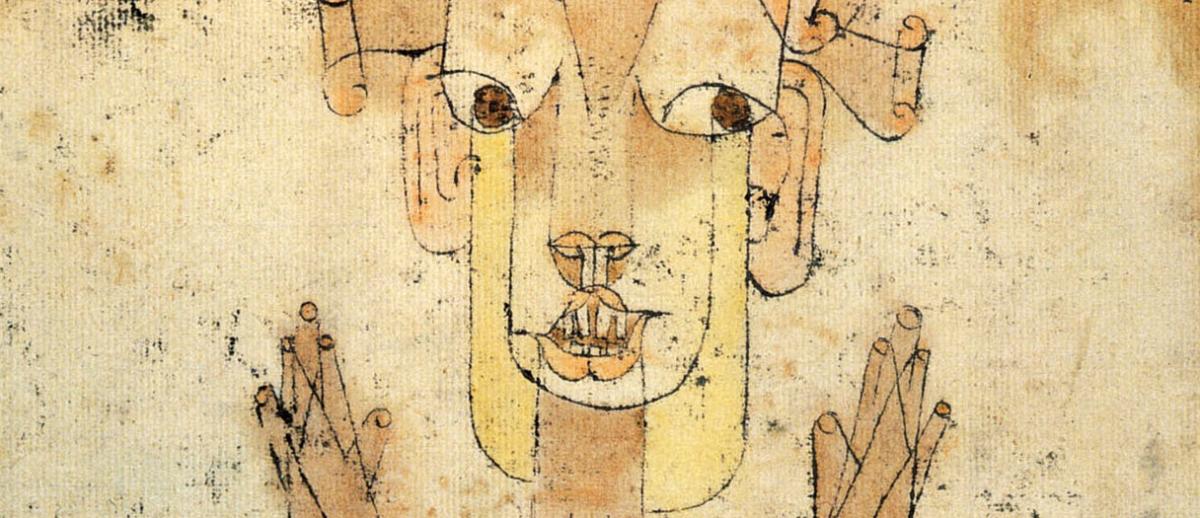Public Imagination as Prophetic Legacy
archive


Public Imagination as Prophetic Legacy
The public imagination: all too inviting a theme, a question, a possibility! Rather than plunging us one more time into the disheartening immediacy of democratic failure, rather than slamming us yet again into so many closed doors of action, the very thought of the imagination as public suggests unforeseen passageways to the future. The “public” at once leaps beyond its current degradation, while the “imagination,” tempted always to private flight, instead swoops and hovers in the interstices of a fresh political assemblage. Suddenly the tedious shadowplay of optimism and pessimism is interrupted; real potentiality for a viable earth future winks at us.
Or is this another tempting intellectual chimera, an excuse for more theoria—which means after all ‘seeing’, imagining—and less practice?
Since many of us remain unmotivated by going prescriptions for pure praxis, why not yield experimentally to the temptation to imagine publically, and to imagine a public? The notion of public imagination summons up a proverb that encapsulates an ancient inseparability of theory and practice. In the familiar translation: “Where there is no vision, the people perish.”1 In other words, without a public imagination, the “public” fails. So here we are 2500 years later, with the popular assemblage that in a democracy “the people” signifies quite possibly in the process of perishing. The populus has yielded to the new populism that confuses itself with authoritarianism. Resenting its loss of economic dignity, local identity, and common ground, it reacts against “the government” and so undermines its own democratic means of access to needed change. It gets blinded to the actual causes of its discontent. Without a vision, the very idea of “the people” perishes. It has been edged out by what Falk and Faessel call the “regressive politics” of right-wing populism and nativism, “intensified by disinformation, fake news, and corporatized media.” The alt-right images directing the erstwhile public to blame its racial religious others as well as the politically correct elites ‘seen’ as sponsoring them now fill the space that the public imagination has vacated.
Such images, deforming shared history and selling fake dreams, are what the Hebrew prophets called idols. Indeed the more literal translation of the proverb reads: “Where there is no prophecy, the people cast off restraint.”2 This unrestrained self-indulgence alludes to the moment of regression when the people, in the narrative of exodus, surrender to the nostalgic intensities of idol-worship—the allure of the riches, the golden calf, of Egypt. In other words the populus escaping from slavery turns to embrace the imaginary of its enslavement. Fortunately, if not without great loss, the people of Israel re-collected itself and the liberative imagination persisted, precisely what was then called “prophecy.” Prophecy in the Hebrew sense did not signify predictions of the future but its critical envisagement: the public imagination of the future. The discourse of hope—not optimism—arises from prophecy, from the anticipation of a “new atmosphere and earth,”3 when the spirit would “renew the face of the earth.”4 The prophetic hope is conditioned on the public practice of justice: “love justice, practice kindness, walk humbly with your God.”5 Not just among “the people” but, recursively: “love the foreigner, for you were foreigners in Egypt.”6

The Golden Calf, by Damien Hirst
My point is not to turn back to the bible for salvation. It is that at least in the West a public imagination of social justice willy nilly echoes the ancient, dissident voices of warning and hope. So scholars of these traditions can help to keep the antecedents exposed, contextual, and diversified. Otherwise we will continue to fall prey to the political theology blustering trumphantly [sic] through the land. In the name of a Christian America it melts its prosperity gospel cum supernaturalism into the golden calf of consumer bliss and bully power. Thus 45 delivered a commencement address at the Fallwellian (the Christian analogue to Orwellian?) Liberty University to a huge crowd of approving born-agains, for whom such actual prophetic texts have been buried beneath their biblical literalism. Contradictions—between his secularism and their fundamentalism, between working class self-interest and the current populism—harden into the idol that we hope will not in retrospect be named fascism.
Prophecy in the Hebrew sense did not signify predictions of the future but its critical envisagement: the public imagination of the future.
In clearing our eyes now, more recent prophetic utterances are being circulated, notably Polanyi, warning of a future fascist reaction to the effects of the new capitalism; and Arendt, who warned of a new fascist international that after WWII could be provoked by mounting crises of immigration and “white supremacism.”7 And less known: 73 years ago Henry A. Wallace, Franklin Roosevelt’s VP, wrote an essay called “The Danger of American Fascists.” His grandson recently published an account of it, as describing “a breed of super-nationalist who pursues political power by deceiving Americans and playing to their fears, but is really interested only in protecting his own wealth and privilege.”8 As vice president, Wallace wrote the following: “They demand free enterprise, but are the spokesmen for monopoly and vested interest.” They also “claim to be super-patriots, but they would destroy every liberty guaranteed by the Constitution.” They posture about putting America first, but it’s only a cover. “They use isolationism as a slogan to conceal their own selfish imperialism.” They need scapegoats and harbor “an intensity of intolerance toward those of other races, parties, classes, religions, cultures, regions or nations.” The citations prove Henry Scott Wallace’s point: his grandfather seems to have “predicted President Trump.”
Ok, “predicted,” but only as long as we don’t confuse such prescience with the false notion of prediction as omniscient knowledge of the future often projected onto the biblical prophecies (especially of the Apocalypse!). But if we are speaking of prophecy as public imagination, it is a strategy to amplify past warnings and past hopes in recognition of their power to open new possibilities: possibilities now, that “flash up,” like Walter Benjamin’s messianic now-time, precisely as recapitulations of a whole history.
With that politico-theological nicety in mind let me turn to another prophecy from that period, actually by a theologian. Reinhold Niebuhr wrote in 1939: “the avoidance of social violence depends upon the ability of a wise statesmanship to prevent the lower middle classes and farmers from becoming the political allies of an imperiled capitalistic oligarchy... Such a political alignment offers the imperiled oligarchy the fascist alternative to capitulation and increases the desperate fury of the dispossessed. Unfortunately, the classes which have moral scruples against violence are not always particularly helpful in guiding the political thinking of lower middle-class life away from the deceptions and perils of fascist politics."9
Having just visited a small town in Northeastern Missouri, I now recall vividly the image of that sad village, with 3 out of 4 businesses boarded up and agriculture abandoned to the distant profits of agribusiness. Nevertheless the underemployed and overworked locals still cherish their identity as farmers and makers, and they voted predictably.
But if we are speaking of prophecy as public imagination, it is a strategy to amplify past warnings and past hopes in recognition of their power to open new possibilities...
There is no need for the present international surge of populist authoritarianism to solidify into fascism. The situation is rife with contradictions that threaten the right as well as the left, that indeed shake up the brittle right/left spectrum itself. The very planet is turbulent with climatic changes now threatening—as endless environmental protections and promises are cancelled—to become all too predictably apocalyptic. In this the trumphant denialism of the right meets the disappointed nihilism of the left. It may be helpful, if you hear the apocalypse whispering “too late, too late,” to recall that at least in the bible, the concept of “the end of the world” does not exist. Even in the Book of Revelation, where there is indeed great planetary catastrophe environmental and human, there is not an end of the world. There is a New Jerusalem of “clean water for all,” of “no more tears”… And it is the most dire of the ancient visions of warning.

Oskar Kokoschka, Prometheus Triptych (1950); central panel 'Apocalyspse'
In our current imagination, I hope that apocalypse roots down into its etymological significance: apokalyptein, to reveal. Not to close down history but to disclose possibility. It can only happen in a great widening of our capacity to tolerate difference on the so-called left so as to work mindfully, cannily, maybe even kindly, with all the dispossessed, even those who resent us so middle-fingeringly. We should do this not so that we can all be one, but so that we can foment a new multiplicity, a pluri-singularity, a coalescence that works our interdependencies to our mutual advantage. That would mean not social movement but local electoral labor, not just local politics but planetary coalition: collusions between multiple religions, between each religion and its accompanying secularization, so between secular and religious modes of public imagination.
In our current imagination, I hope that apocalypse roots down into its etymological significance: apokalyptein, to reveal. Not to close down history but to disclose possibility. It can only happen in a great widening of our capacity to tolerate difference on the so-called left so as to work mindfully, cannily, maybe even kindly, with all the dispossessed, even those who resent us so middle-fingeringly. We should do this not so that we can all be one, but so that we can foment a new multiplicity, a pluri-singularity, a coalescence that works our interdependencies to our mutual advantage. That would mean not social movement but local electoral labor, not just local politics but planetary coalition: collusions between multiple religions, between each religion and its accompanying secularization, so between secular and religious modes of public imagination.
1 Proverbs 29:18, King James Version.
2 New Revised Standard Version.
3 Usually “new heaven and earth,” a phrase first used in the Second Isaiah.
outer atmosphere, visible and invisible.
4 Psalm 104:30
5 Micah 6:8
6 Deuteronomy 10:19, also translated as “stranger,” “alien,” “immigrant.”
7 See William Connolly’s timely discussion of Karl Polanyi’s The Great Transformation
Fascist International” (1945). Essays in Understanding, 1930-1954: Formation, Exile,
and Totalitarianism. New York: Random House, 1994.
8 Henry Scott Wallace, “American Fascism, In 1944 and Today.” New York Times
9 cited in Marcia Pally, “Apres Macron: Can We Escape from the Neoliberal-Populist
Latest/Archive page image by Chen Wenling ( 陈文令 ), 'God of Materialism' (2008);



